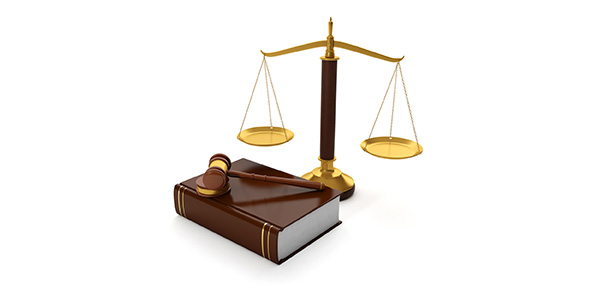Legal Studies Quiz - Tort Law

A quiz about legal studies, tort law.
Questions and Answers
- 1.
What is the type of tort law in McDonald’s Restaurants v. Morris & Steel, 1990?
Explanation
The correct answer is defamation, specifically libel. In the case of McDonald's Restaurants v. Morris & Steel, 1990, the type of tort law involved was defamation, which refers to the act of damaging someone's reputation through false statements. In this case, it was specifically libel, which refers to defamation in written or printed form.Rate this question:
- 2.
Case Study:After surgery, a patient realises that a pair of scissors has been left inside them. They decide to sue the hospital they went to for negligence. Who is the plaintiff in the case?
- A.
The hospital
- B.
The patient
Correct Answer
B. The patientExplanation
The patient is the plaintiff in the case because they are the one filing the lawsuit against the hospital for negligence. As the injured party, they are seeking legal action and compensation for the harm caused by the hospital's negligence in leaving a pair of scissors inside them during surgery.Rate this question:
-
- 3.
Negligence, defamation and trespass are all kinds of tort law. What is the fourth type?
Correct Answer
NuisanceExplanation
Negligence, defamation, trespass, and nuisance are all types of tort law. Nuisance refers to a legal concept where an individual's use or enjoyment of their property is interfered with by another party's actions. This interference can be in the form of noise, pollution, or other disturbances that cause inconvenience or harm. Nuisance cases often involve disputes between neighbors or businesses, and the affected party can seek legal remedies to stop or prevent the interference.Rate this question:
- 4.
Which of the following is a principle of defamation?
- A.
Duty of care breached
- B.
Statement refers to the plaintiff
- C.
The defendant committed an act/omission which caused inconvenience to the plaintiff
- D.
Absolute Privilege
Correct Answer
B. Statement refers to the plaintiffExplanation
The principle of defamation states that a statement refers to the plaintiff. Defamation occurs when false information is communicated to a third party, damaging the reputation of the plaintiff. In this case, the statement is directly related to the plaintiff, indicating that it is defamatory.Rate this question:
-
- 5.
In the case of Anderson, et. al v. PG&E, 1993, who is the defendant?
Correct Answer
PG&E
Pacific Gas and Electric
Pacific Gas and Electric CompanyExplanation
The defendant in the case of Anderson, et. al v. PG&E, 1993 is PG&E, which stands for Pacific Gas and Electric.Rate this question:
- 6.
Case Study:A pedestrian crossed a road without looking, and consequently was hit by a speeding car. The pedestrian sued the driver for negligence. What defence may the driver use?
- A.
Remoteness of Damage
- B.
Absolute Privilege
- C.
Legalised by prescription
- D.
Contributory Negligence
- E.
Justification
Correct Answer
D. Contributory NegligenceExplanation
The driver may use the defense of contributory negligence. Contributory negligence is a legal doctrine that states if the plaintiff's own negligence contributed to their injuries, they may be barred from recovering any damages from the defendant. In this case, the pedestrian crossed the road without looking, which can be seen as negligent behavior. Therefore, the driver can argue that the pedestrian's own negligence contributed to the accident and should be held partially responsible for the injuries.Rate this question:
-
Quiz Review Timeline +
Our quizzes are rigorously reviewed, monitored and continuously updated by our expert board to maintain accuracy, relevance, and timeliness.
-
Current Version
-
Mar 21, 2023Quiz Edited by
ProProfs Editorial Team -
Sep 12, 2009Quiz Created by
Legalproject
- Activism Quizzes
- Adult Quizzes
- Age Quizzes
- Antisocial Quizzes
- Boy Quizzes
- Bullying Quizzes
- Clan Quizzes
- Communism Quizzes
- Community Quizzes
- Conflict Quizzes
- Cultural Assimilation Quizzes
- Culture Quizzes
- Death Quizzes
- Destiny Quizzes
- Dictator Quizzes
- Disability Quizzes
- Environment Quizzes
- Ethnicity Quizzes
- Etiquette Quizzes
- Event Quizzes
- Feminism Quizzes
- Festival Quizzes
- Fraternity Quizzes
- Future Quizzes
- Gay Quizzes
- Gender Quizzes
- Generation Quizzes
- Girl Quizzes
- Goth Quizzes
- Homelessness Quizzes
- Human Rights Quizzes
- Humanity Quizzes
- Kid Quizzes
- Labor Quizzes
- Lesbian Quizzes
- LGBT Quizzes
- Lifestyle Quizzes
- Man Quizzes
- Mature Quizzes
- Military Quizzes
- Morality Quizzes
- Movement Quizzes
- Museum Quizzes
- Mythology Quizzes
- Paranormal Quizzes
- Peer Pressure Quizzes
- People Quizzes
- Politics Quizzes
- POSH Quizzes
- Racism Quizzes
- Religion Quizzes
- Romanticism Quizzes
- Security Quizzes
- Social Quizzes
- Social Science Quizzes
- Spirituality Quizzes
- Tribe Quizzes
- Wedding Quizzes
- Women Quizzes
- Work Quizzes
- Youth Quizzes
 Back to top
Back to top


